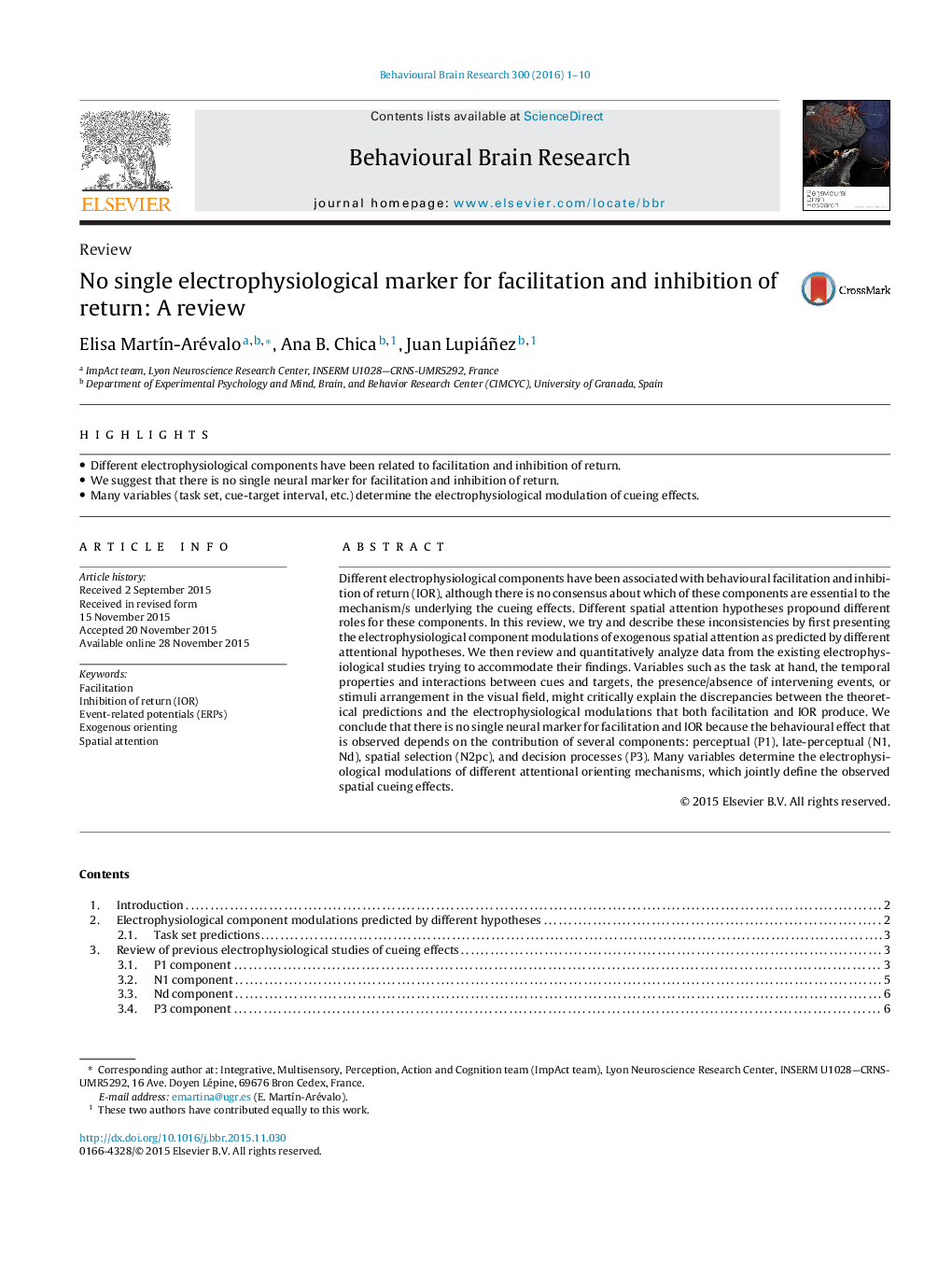| کد مقاله | کد نشریه | سال انتشار | مقاله انگلیسی | نسخه تمام متن |
|---|---|---|---|---|
| 4312194 | 1612933 | 2016 | 10 صفحه PDF | دانلود رایگان |
• Different electrophysiological components have been related to facilitation and inhibition of return.
• We suggest that there is no single neural marker for facilitation and inhibition of return.
• Many variables (task set, cue-target interval, etc.) determine the electrophysiological modulation of cueing effects.
Different electrophysiological components have been associated with behavioural facilitation and inhibition of return (IOR), although there is no consensus about which of these components are essential to the mechanism/s underlying the cueing effects. Different spatial attention hypotheses propound different roles for these components. In this review, we try and describe these inconsistencies by first presenting the electrophysiological component modulations of exogenous spatial attention as predicted by different attentional hypotheses. We then review and quantitatively analyze data from the existing electrophysiological studies trying to accommodate their findings. Variables such as the task at hand, the temporal properties and interactions between cues and targets, the presence/absence of intervening events, or stimuli arrangement in the visual field, might critically explain the discrepancies between the theoretical predictions and the electrophysiological modulations that both facilitation and IOR produce. We conclude that there is no single neural marker for facilitation and IOR because the behavioural effect that is observed depends on the contribution of several components: perceptual (P1), late-perceptual (N1, Nd), spatial selection (N2pc), and decision processes (P3). Many variables determine the electrophysiological modulations of different attentional orienting mechanisms, which jointly define the observed spatial cueing effects.
Journal: Behavioural Brain Research - Volume 300, 1 March 2016, Pages 1–10
